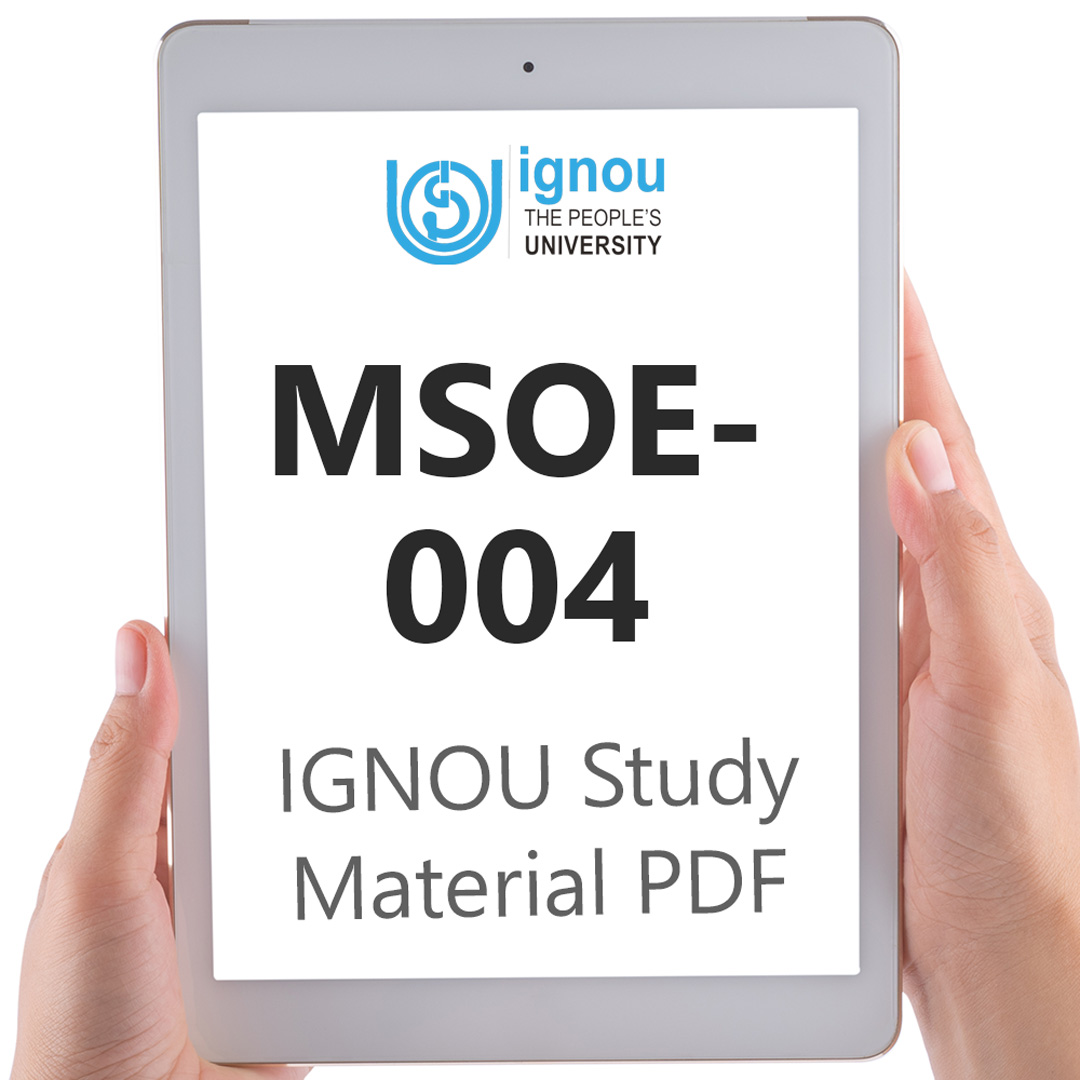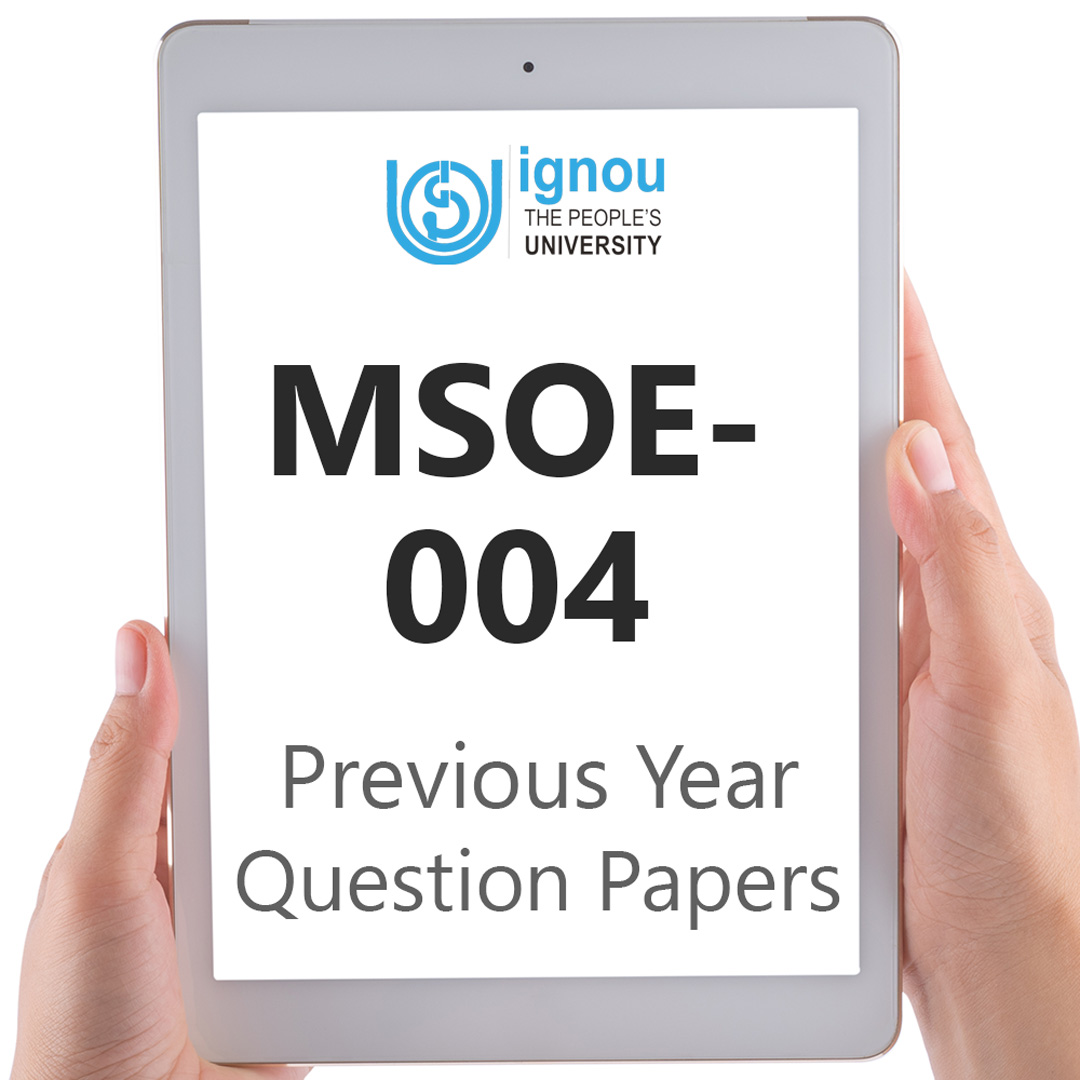If you are looking for MSOE-004 IGNOU Solved Assignment solution for the subject Urban Sociology, you have come to the right place. MSOE-004 solution on this page applies to 2023-24 session students studying in MSO courses of IGNOU.
MSOE-004 Solved Assignment Solution by Gyaniversity
Assignment Code: MSOE-004/AST/TMA/2023-24
Course Code: MSOE-004
Assignment Name: Urban Sociology
Year: 2023-24
Verification Status: Verified by Professor
Answer any five questions selecting at least two from each Section. Your answer should be in about 500 words each.
Section-I
Q1) Discuss the contributions of Chicago school theorists to urban sociology.
Ans) The Chicago School of Sociology made substantial contributions to the understanding of urban life and the dynamics of cities. Here are some key contributions:
a) Ecological Perspective: The Chicago School scholars, including Robert Park and Ernest Burgess, introduced the ecological perspective to study cities as social organisms. They emphasized the interrelation between social groups and physical spaces within the city. The concept of "human ecology" likened the city to a biological organism, examining how different social groups adapt and interact within urban environments.
b) Social Disorganization Theory: Park and his colleagues explored the concept of social disorganization, which focuses on how rapid urbanization and population shifts disrupt social order. They studied the impact of these changes on communities, leading to weakened social bonds, increased crime, and other social problems. This theory aimed to understand the breakdown of traditional community structures in urban areas.
c) Concentric Zone Model: Ernest Burgess developed the concentric zone model, also known as the Burgess model or the concentric ring model, to illustrate the spatial organization of cities. This model divided urban areas into concentric zones based on land use, with the central business district at the core, surrounded by zones characterized by different socioeconomic statuses and housing types. It provided a framework to understand urban development and social stratification.
d) Urban Ethnography: Chicago School scholars pioneered urban ethnography, emphasizing fieldwork and qualitative research methods to study urban life. Their approach involved firsthand observation, interviews, and immersion in the communities they studied. This method aimed to understand the lived experiences of individuals within specific urban contexts, providing rich insights into social relationships, culture, and everyday life.
e) Cultural Transmission: The Chicago School contributed to the study of cultural transmission within urban environments. They explored how cultures, norms, and values were transmitted and adapted across different social groups in cities. This research highlighted the role of social interactions and the urban environment in shaping cultural practices and identities.
f) Human Ecology and Social Change: The Chicago School's work laid the groundwork for understanding urbanization, social change, and the effects of industrialization on society. Their studies examined how cities evolve over time, the impact of migration on urban communities, and the dynamics of social change in urban environments.
Overall, the Chicago School's contributions revolutionized the study of urban sociology by emphasizing the interconnectedness of social structures, physical spaces, and cultural dynamics within cities. Their theories and research methods continue to influence urban studies and shape our understanding of contemporary urban issues.
Q2) What are pre-industrial cities? Describe and discuss its features with an example.
Ans) Pre-industrial cities refer to urban centers that existed before the Industrial Revolution, characterized by specific features and socio-economic structures distinct from modern industrialized cities.
The key characteristics of pre-industrial cities
a) Small and Compact: Pre-industrial cities were relatively small and compact compared to modern cities. Their sizes were limited by transportation constraints, and they typically had centralized cores surrounded by walls for protection.
b) Agrarian Economy: These cities were predominantly agrarian, with agricultural activities serving as the primary economic base. Agriculture was essential for sustenance and trade within the city and its immediate vicinity.
c) Social Hierarchy: Social stratification was a significant aspect of pre-industrial cities. There was a clear hierarchical structure with ruling elites, followed by merchants, artisans, laborers, and peasants. Social status often determined one's occupation and living conditions.
d) Limited Specialization: Occupational specialization existed but was relatively limited compared to later industrial cities. Craftspeople and artisans produced goods for local consumption rather than mass production for distant markets.
e) Religious and Cultural Centers: Many pre-industrial cities were religious and cultural centers, housing prominent religious institutions, temples, or mosques that played a central role in civic life.
f) Limited Infrastructure: Infrastructure such as roads, sanitation, and utilities were basic and limited. Cities often lacked sophisticated systems for water supply and sewage disposal.
Example: Ancient Athens
Ancient Athens in Greece serves as an example of a pre-industrial city. During the 5th century BCE, Athens was a small, compact city-state centered around the Acropolis. It was an important cultural and intellectual hub, known for its democratic governance, philosophy, arts, and architecture. Agriculture was crucial for its economy, and the city-state's social structure was hierarchical, with citizens enjoying political rights, followed by non-citizens, slaves, and women. Athens had limited specialization in crafts and trade, with goods produced mainly for local consumption.
Despite their limitations, pre-industrial cities were centers of culture, trade, and governance, laying the foundation for the development of later urban centers. They offer valuable insights into early urbanization, social structures, and the evolution of cities before the transformative effects of industrialization and urbanization.
Q3) What is the nature of family in urban areas? Give examples.
Ans) The nature of the family in urban areas often reflects the dynamics of city living, impacting its structure, functions, and relationships.
Here are some characteristics:
a) Nuclear Families: Urban areas typically witness a higher prevalence of nuclear families compared to extended families found more commonly in rural settings. Nuclear families consist of parents and their children, and this setup is often favoured due to economic factors, career opportunities, and lifestyle choices.
b) Dual-Career Families: In urban settings, both partners in a marriage often pursue careers or employment. This dual-career scenario shapes family dynamics, affecting decision-making, time allocation, and roles within the household.
c) Social Diversity: Urban areas host diverse populations, leading to multi-cultural and multi-ethnic families. This diversity can influence family values, traditions, and practices as families navigate various cultural influences.
d) Social Isolation and Support Networks: Urban living can sometimes result in social isolation due to fast-paced lifestyles and limited social interaction. However, it can also foster new support networks, including neighbours, community groups, or social media connections, which can play a crucial role in providing support to urban families.
e) Economic Pressures: Urban living often involves higher costs of living, housing, and education. Families may face financial pressures, leading to strategic decisions about family size, education, and lifestyle choices.
f) Changing Role of Gender: In urban settings, there's often a shift in gender roles, with women increasingly entering the workforce and contributing significantly to the family income. This shift impacts traditional family roles and responsibilities.
Examples
a) Mumbai, India: Mumbai is a bustling urban center characterized by a mix of nuclear families residing in apartments or small houses due to limited space. Dual-income households are prevalent due to the city's economic opportunities. Families adapt to the fast-paced life, often relying on a blend of modern and traditional values.
b) New York City, USA: New York City exemplifies diversity, hosting families from various cultural backgrounds. This diversity influences family dynamics, traditions, and social networks. The city's high living costs often impact family decisions regarding housing, education, and career choices.
c) Tokyo, Japan: Tokyo reflects a society where traditional values intersect with modern urban living. While nuclear families are common, there's an emphasis on strong family ties despite career demands. Support networks and communal living play crucial roles in mitigating the pressures of city life.
The nature of families in urban areas is multifaceted, shaped by a blend of economic, social, cultural, and lifestyle factors that influence how families interact, function, and evolve within the urban landscape.
Section-II
Q4) How does industrialisation affect the different social institutions in society? Discuss.
Ans) Industrialization, as a transformative force, profoundly impacts various social institutions within a society. Here's how it influences them:
a) Economic Institution: Industrialization revolutionizes the economic structure, shifting from agrarian-based economies to industrial economies. It brings forth the rise of factories, mass production, and specialization of labor. It also introduces the concept of wage labor, altering traditional economic relationships.
b) Family Institution: Industrialization often leads to changes in family structures and dynamics. Rural-to-urban migration for employment opportunities disrupts extended family setups, resulting in nuclear family systems in urban areas. The roles of family members evolve as women increasingly enter the workforce, changing traditional gender roles.
c) Education System: Industrialization necessitates an educated and skilled workforce. It leads to the establishment of formal education systems to provide the required skills and knowledge. Schools become essential institutions for imparting education and training necessary for industrial jobs.
d) Political Institution: Industrialization can drive political change. It sparks movements for workers' rights, leading to the emergence of labor unions and political parties advocating for workers' welfare. This shift in power dynamics often leads to changes in government policies and laws.
e) Religious Institution: Industrialization impacts religious practices and beliefs. As societies urbanize and modernize, religious institutions may adapt to new social norms and values. Industrialization can also lead to secularization, where religion plays a less dominant role in public life.
f) Healthcare System: Industrialization often brings about advancements in healthcare. Urbanization and industrial growth lead to the establishment of hospitals, healthcare facilities, and public health initiatives to address the health challenges posed by industrialization.
g) Social Stratification: Industrialization can alter social hierarchies. It may create new classes based on economic wealth and occupation, leading to social mobility for some and inequality for others. This can also lead to the growth of an urban middle class.
h) Technological Advancements: Industrialization fosters technological innovations that impact all social institutions. It introduces machinery, transportation, and communication systems that revolutionize how people work, live, and interact.
In summary, industrialization reshapes social institutions by altering economic structures, family dynamics, education systems, political landscapes, religious beliefs, healthcare provisions, social hierarchies, and technological advancements. Its impact is vast and far-reaching, transforming societies in profound ways as they transition from agrarian-based economies to industrialized urban societies.
Q5) Discuss critically the role and responsibility of media in urban governance.
Ans) The media plays a crucial role in urban governance by serving as a bridge between the government, citizens, and various stakeholders.
Here's a critical analysis of its role and responsibilities:
a) Information Dissemination: Media acts as a primary source of information, providing citizens with updates on urban policies, initiatives, and developments. However, its responsibility lies in presenting unbiased and accurate information, avoiding sensationalism or manipulation.
b) Public Opinion Formation: Media shapes public opinion on urban issues through its reporting. However, there's a risk of bias, as media outlets might cater to specific interests or viewpoints, influencing public perception.
c) Accountability and Transparency: It holds governments and urban institutions accountable by investigating and reporting on issues related to corruption, mismanagement, or lack of transparency. Responsible reporting ensures checks and balances in urban governance.
d) Advocacy and Agenda-Setting: Media can advocate for the urban agenda, highlighting critical issues like infrastructure, public services, and environmental concerns. However, it should ensure a balanced representation of diverse viewpoints rather than promoting specific agendas.
e) Citizen Empowerment: Through investigative journalism and citizen journalism, media empowers citizens to participate actively in urban governance by raising awareness, mobilizing communities, and fostering dialogue between authorities and the public.
f) Challenges of Commercialization: Media's reliance on advertising revenue and corporate interests can influence content, potentially sidelining critical urban issues in favour of entertainment or commercial news.
g) Ethical Responsibility: The media should adhere to ethical standards, avoiding sensationalism, fake news, or biased reporting that can misinform the public and undermine urban governance.
h) Technological Influence: With the advent of digital media and social platforms, the dissemination of information has become rapid. However, this also poses challenges such as the spread of misinformation and the need for fact-checking and responsible reporting.
i) Local Reporting: Strengthening local journalism is crucial for addressing neighbourhood-specific urban issues. However, declining resources and focus on high-impact national or global news might neglect local urban governance matters.
j) Collaboration and Engagement: Media should collaborate with urban governance bodies, civil society organizations, and citizens to foster dialogue, transparency, and effective solutions for urban challenges.





